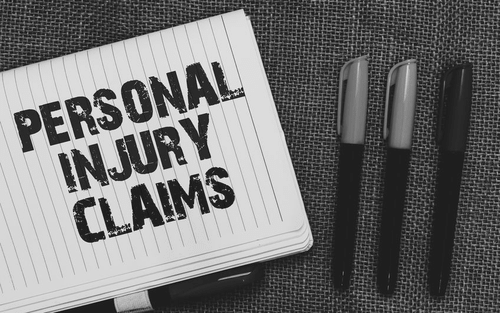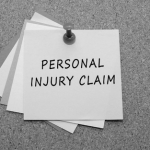From time to time, the media will report about a case that is brought for injuries suffered in a bad crash, a death, or other injury claimed to be caused by the fault of another. Oftentimes, once the Complaint is filed with the Court, the media report says something like “they are suing for $50,000 in damages.” Sometimes, my friends or family will ask me, “Why only $50,000, that seems like it should be way more?” The answer is simple, it is a common misunderstanding the general public and media have related to one of the rules that have to be followed for pleading personal injury cases as it relates to non-economic damages.
Types Of Damages Allowed In North Dakota Personal Injury Cases
First, we should go through the allowed damages in a personal injury/wrongful death case in North Dakota, which consist of two broad categories: economic and non-economic. These broad categories consist of the following types of damages that are allowed to be sought if applicable:
Economic Damages:
N.D.C.C. § 32-02.2-04(1) allows for the recovery of the following economic damages:
- medical expenses and medical care
- rehabilitation services
- custodial care
- loss of earnings and earning capacity
- loss of income or support
- burial costs
- cost of substitute domestic services
- loss of employment or business or employment opportunities
- and any other monetary losses proved
Non-Economic Damages:
N.D.C.C. § 32-02.2-04(2) allows for the recovery of the following non-economic damages:
- pain
- suffering
- inconvenience
- physical impairment
- disfigurement
- mental anguish
- emotional distress
- fear of injury, loss, or illness
- loss of society and companionship
- loss of consortium
- injury to reputation
- humiliation
- and other nonpecuniary damages proved
The Law That Leads To The Misunderstanding Of The Amount Of Claimed Damages
There is a law in North Dakota that we believe leads to the common misunderstanding amongst the general public and media about what will be sought for final amounts of damages before a jury during a trial. This comes from the law that applies when first pleading the case in the Complaint. A little background first.
All injured persons who seek damages for personal injuries through a lawsuit have to bring a Complaint, which carries with it certain requirements for pleading. Under N.D.C.C. § 32-03.2-07, any Complaint about death or injury to a person can ask for economic and non-economic damages separately. The law requires that any request for non-economic damages of less than $50,000 or for economic damages may be for a specified dollar amount. However, in cases where the non-economic damages being sought are for $50,000 or more, the amount must be stated generally as “a reasonable sum but not less than fifty thousand dollars.” Most cases these days are for more than $50,000 in non-economic damages, which is why most cases are misunderstood to be asking for $50,000 in damages.
So, when I see a news report or article that says a person who was killed or injured is seeking “$50,000 in damages” in a lawsuit, I know immediately that the legal requirement of pleading it as “a reasonable sum but not less than fifty thousand dollars” has confused the issue. In reality, that just means that they will be asking for damages for an amount of more than $50,000 at trial for the non-economic damages.
How Much Can You Ask For From The Jury Then?
So long as you meet the requirement of pleading in the Complaint “a reasonable sum but not less than fifty thousand dollars” for non-economic damages, you are allowed to ask for any amount that you feel the jury should provide in its verdict to fully compensate for all of the non-economic damages. Additionally, you can ask for all applicable economic damages in whatever amount those add up to. So, when you read a news story that says an injured party or family of someone who was killed asked in their Complaint for $50,000, but then asked for a lot more from the jury, that is simply a common misunderstanding due to a legal requirement of how non-economic damage amounts are to be stated in the Complaint.
Conclusion
Each case is different, and this article only provides general information about how damages work in a personal injury case. The information contained in this article and on this website is for informational purposes only and not for the purpose of providing legal advice. You should contact an attorney to obtain advice with respect to any particular issue or problem you may have related to a personal injury case.
If you have a personal injury case in North Dakota, do not hesitate to reach out to the Personal Injury Team at SW&L Attorneys. You can contact us via phone at 701-297-2890, or by emailing us below.










